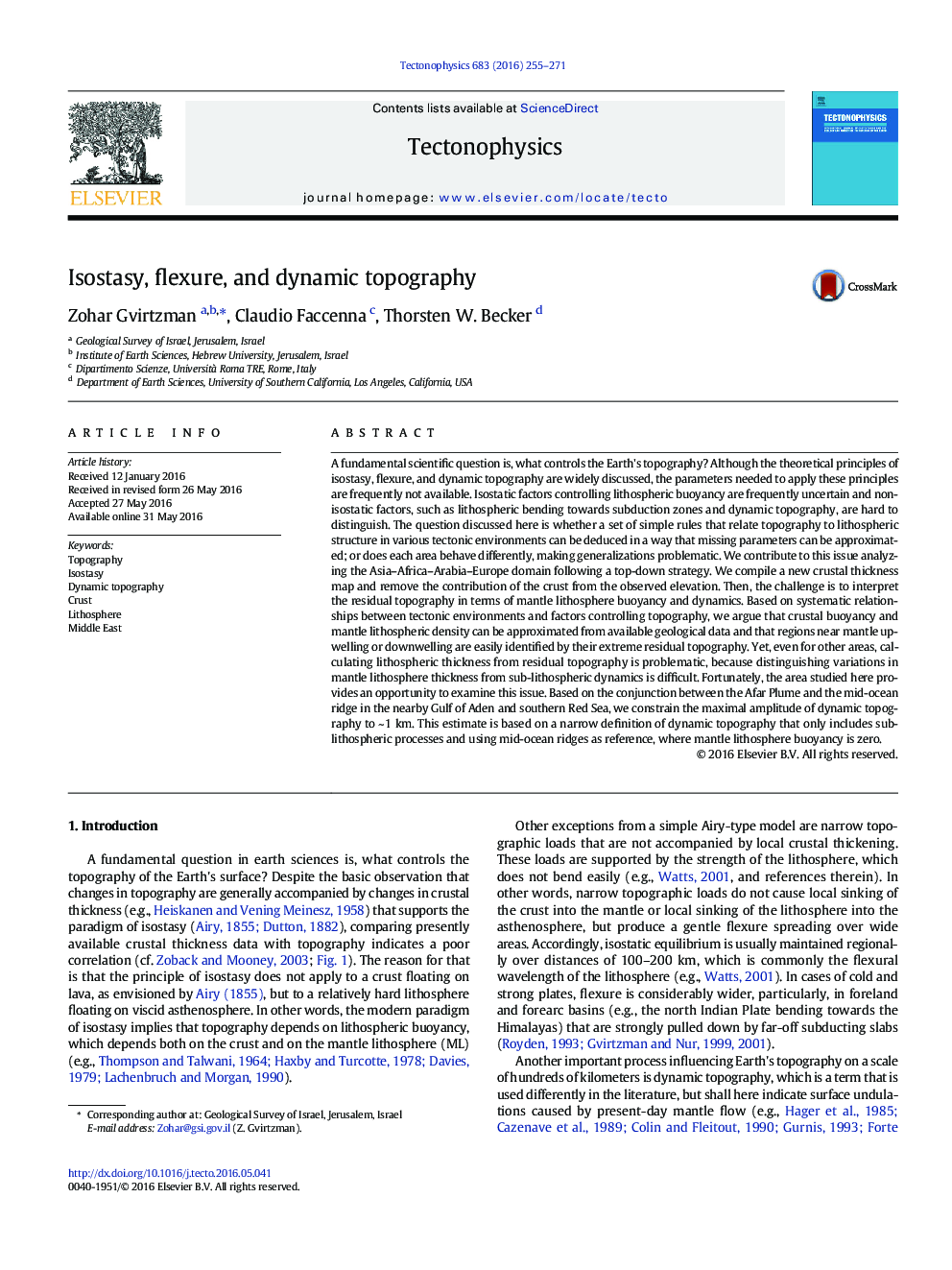| کد مقاله | کد نشریه | سال انتشار | مقاله انگلیسی | نسخه تمام متن |
|---|---|---|---|---|
| 6433382 | 1636715 | 2016 | 17 صفحه PDF | دانلود رایگان |

- Twenty tectonic environments in the Asia-Africa-Arabia-Europe domain are examined.
- Simple rules relate topography to lithosphere structure in various tectonic regions.
- Extreme values of residual topography clearly indicate deviations from isostasy.
- Error in lithospheric thickness inferred from isostasy for north Arabia is relatively small.
- Isostatic lithosphere doesn't exactly coincide with other lithospheric definitions.
A fundamental scientific question is, what controls the Earth's topography? Although the theoretical principles of isostasy, flexure, and dynamic topography are widely discussed, the parameters needed to apply these principles are frequently not available. Isostatic factors controlling lithospheric buoyancy are frequently uncertain and non-isostatic factors, such as lithospheric bending towards subduction zones and dynamic topography, are hard to distinguish. The question discussed here is whether a set of simple rules that relate topography to lithospheric structure in various tectonic environments can be deduced in a way that missing parameters can be approximated; or does each area behave differently, making generalizations problematic. We contribute to this issue analyzing the Asia-Africa-Arabia-Europe domain following a top-down strategy. We compile a new crustal thickness map and remove the contribution of the crust from the observed elevation. Then, the challenge is to interpret the residual topography in terms of mantle lithosphere buoyancy and dynamics. Based on systematic relationships between tectonic environments and factors controlling topography, we argue that crustal buoyancy and mantle lithospheric density can be approximated from available geological data and that regions near mantle upwelling or downwelling are easily identified by their extreme residual topography. Yet, even for other areas, calculating lithospheric thickness from residual topography is problematic, because distinguishing variations in mantle lithosphere thickness from sub-lithospheric dynamics is difficult. Fortunately, the area studied here provides an opportunity to examine this issue. Based on the conjunction between the Afar Plume and the mid-ocean ridge in the nearby Gulf of Aden and southern Red Sea, we constrain the maximal amplitude of dynamic topography to ~Â 1Â km. This estimate is based on a narrow definition of dynamic topography that only includes sub-lithospheric processes and using mid-ocean ridges as reference, where mantle lithosphere buoyancy is zero.
Journal: Tectonophysics - Volume 683, 30 June 2016, Pages 255-271